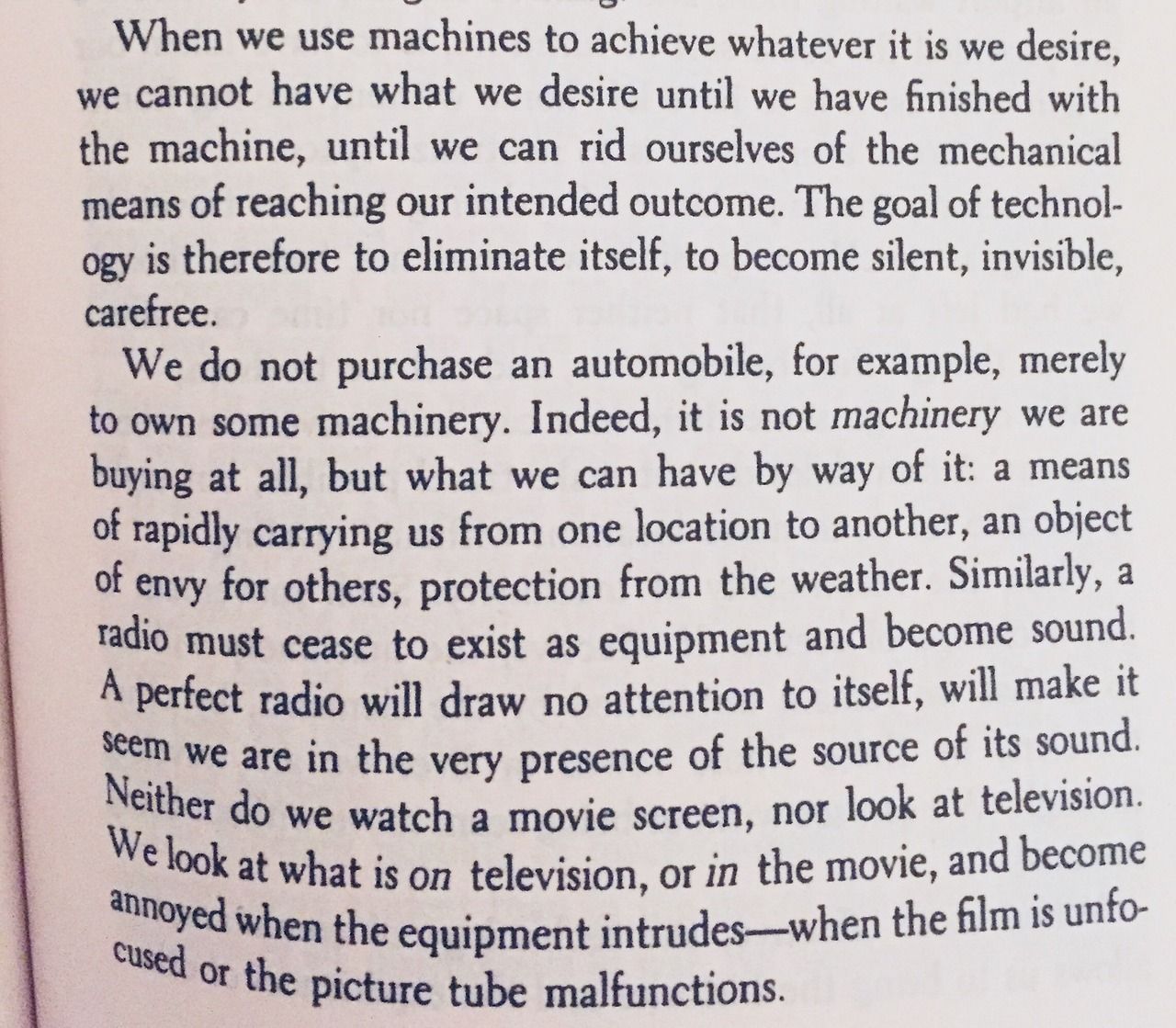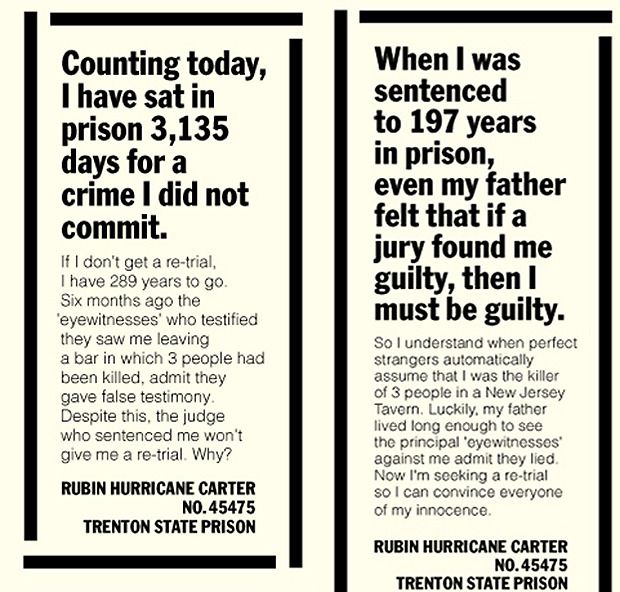Assorted Links 2/10/17
Rewatching a few Curb Your Enthusiasm classics. Stumbled on this fantastic, sub 2 minute (NSFW) dinner party story. I’ll be collecting examples of short, memorable speeches, stories, anecdotes over on this youtube playlist.
No one gets hit harder than those football players. I wonder, if audiences love the sound of hits so much, why not use VR/AR/SFX to really really exaggerate them? What if sacks were a bit less physically brutal, but looked and felt more satisfying than a Mortal Kombat fatality or a WWE body slam? Would that reduce injuries or increase them?
Fascinating article on the gentrification of the web. We can’t rely on our heuristics to judge the value of something when everything looks great. This is the world we live in now (thanks designers) , when museums (and restaurants) optimize for Instagram. :(
Reading Developer Hegemony.
There’s nothing beyond automation but possibility
“The Web is going to have a great deal of custom-application software to write. You’re not just going to be able to buy something off the shelf. You’re going to have to hook the Web into you order-management systems, your collection systems. It’s going to be an incredible amount of work.
The number of applications that need to be written is growing exponentially. Unless we can find a way to write them in a tenth of the time, we’re toast.”
Steve Jobs, ruminating on software, about 21 years ago.
He was right. He was talking specifically about ecommerce. That incredible amount of work was largely done by Amazon, to support their rapidly growing business. AWS was a by-product, that heralded 1000′s of new startups (and custom software).
In the meantime, developers also found ways to write better software. Javascript libraries and cheap servers (again, thanks to Amazon) means it’s never been faster or easier to build and deploy a web app to the entire world (and scale it up if it gets traction).
Now, where do we go from here?
Over the past 6 months I’ve been exploring the world of code, and I’m really intrigued with the mindset of skilled software engineers. This post is inspired by a chat with resident magician Leejay Xia.
Let’s squint into the future.
Let’s assume the cost of building customizable software will continue to drop, like it has been for the past decade.
Just like developers no longer need to rack servers, or hand-write css, they will continue to move onto higher levels of abstraction.
What do developers do when software writes itself?
You’ll probably still need someone to shepherd that ‘creative’ process. Someone, or something that says no to things, tells a story, stands out from competitors, orientates around people and does unexpected or interesting things.
So at that level, you still need to ‘design’ it. I’m using the verb design as it’s second definition there, “purpose, planning, or intention that exists behind an action, fact, or material object”.
There’s two sides to this future of work.
One is positive, one is negative.
The positive is the possibility of automation. We tend to think of automation as cheating, or as non-creative. That’s wrong. The way I see it is there’s really nothing beyond automation, but infinite possibilities. When software eats the world, we’re saying everything is automated.
The negative is, that ‘shepherd’, that thing in control of the process of creation might not be human.
September 29, 2017 future work productivity software tech steve jobs apple design
To Advertise Is Human
Advertising. You’re trying to make people aware of something that they were not previously aware of.
Amazing products like an iPhone are naturally easier to sell than more obscure or abstract things.
Dating profiles, craigslist posts and even scribbled posters for a neighborhood block party are all ads. Look at me, remember me, maybe even do something too!
So why don’t people take advantage, and treat these like serious ads?
A few reasons. Most people think advertising is inherently evil, haven’t learnt how to write, design or persuade and are not interested in doing so. Or maybe haven’t even thoughtabout advertising as an option.
That last angle is interesting to me. Tucker Max talks about how he reframed a job post, and 10x’d his applications.
Job advertisements are traditionally boring, hard to read and framed around what the employer wants, rather than what they can offer the reader.
A better (performing) ad, frames the job around the readers interests, desires, motivations, identity etc.
Instead of writing robotic requirements, Tucker “scripted a movie, with the reader as the hero.”
He made it about them.
He made an actual ad.
This is what successful mass communication has done for 150+ years.
Successful communication speaks to you. Yes, there’s often a hidden goal, but first you have to get attention. And to get attention, you have to be good.
Copywriting, design, and a bit of creativity are hugely powerful levers for achieving this attention.
And thanks to AWS, Youtube and Facebook, it’s never been easier to start a company, make a video and spread it around the world.
The ‘old world’ media barons are naturally upset about this sudden transfer of power.
Today, there is so much potential to get your idea seen, and sold!
Since the benefits of advertising are fairly simple and obvious, it’s not a particularly risky move to advertise.
“If the medium you’ve chosen reaches the people you want to reach, and if your medium clearly carries the name of your brand, your money will not have been wasted.” - Jeremy Bullmore
If you’re interested, there’s two areas to look into.
First, finding the opportunity to advertise something. If you’re trying to communicate or get attention for anything, there’s an opportunity.
Secondly, supercharging that communication. The internet has enabled distribution that would make Gutenberg shit his 15th century pants. There’s no reason not to take advantage with world class messages.
You’ll need good user-centered design, clear copywriting and clever, creative ideas.
What are you waiting for?
A little effort goes a long way
One of my many sub-routines at Crossfit is to use this real-life calculator to figure out how much weight I lifted.
I use a communal computer, an old PC, and a communal calculator and do some quick arithmetic.
It’s a pretty clunky experience in 2017.
The software designer wants to intervene.
This can be put on an improvement roadmap. Remove friction. Increase score input per member. Higher retention. More money.
And hell, in terms of features, building a simple calculator into the product is about as low-hanging as fixing a typo.
It’s not hard to implement and bundle with next release.
But it made me think, how much of Crossfit can software eat?
Maybe it’s a little less than you’d think.
Intangibles can’t be quantified. By definition they slip through the gaps.
But as software makers, we must consider them as integral components of the end to end experience.
At it’s best, software can recreate these real things.
Matt Levine of Bloomberg View argues simulacrum is a central product of the modern technology industry: Facebook Inc.’s business, after all, is creating the perception that you are maintaining meaningful friendships with hundreds of people while you are actually, through the miracle of technology, clicking icons on a screen.
At it’s worst, software sucks the blood out. All that’s left is something that not only isn’t real, but doesn’t even feel real.
Intangibles don’t have to be easy, fun or positive like a high-five or fist bump from a coach. They can be tough. And that’s where I think our calculator fits in.
In Crossfit, it could be lactic acid building up in your muscles or the loud clang of bumper plates hitting the floor. Tidying up after you lift. An embarrassing ‘question of the day’ or the whip of the skipping rope on your shins.
I believe making users work a bit harder, or at least feel like it, can be a good thing for your product. Think of these barriers as placebos.
Rory Sutherland elaborates while speaking with Shane Parrish: “There has to be a kind of borderline pain threshold thing…some grit in the oyster…for the placebo to work.” Other well known examples include the medicine-like taste of Red Bull, and Ikea’s insane purchase journey.
As software designers and builders, it’s natural to see everything as an optimization problem. Racing to iron out the ‘kinks’ is not the solution.

